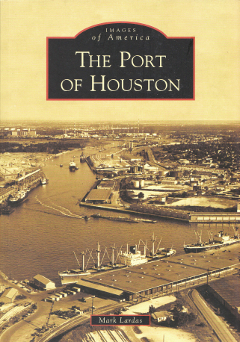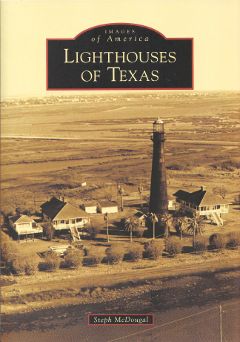Saturday, May 17th, 2014
2:00 – 4:00 p.m.
Texas shipping is the theme for this Saturday’s signing event with 2 local authors, Mark Lardas and Steph McDougal.
Lighthouses of Texas
by Steph McDougal
Soft cover, 128 pages, $21.99
The Port of Houston
by Mark Lardas
Soft cover, 128 pages, $21.99
Both “The Port of Houston” and “Lighthouses of Texas” are issued by Arcadia Publishing as part of their popular “Images of America” series which focuses on local histories with an emphasis on archival photographs, maps, and illustrations.

To reach the Port of Houston’s Turning Basin, a ship must travel 50 miles along a narrow and twisting channel that passes through Galveston Bay, the San Jacinto River, and Buffalo Bayou. Despite this improbable location, Houston has the world’s largest landlocked port. Measured by annual tonnage shipped, the Port of Houston is the second-largest port in the United States. Its docks, wharves, and facilities cover more than 25 miles. The port starts its second century as a seaport in 2014. Its transformation from a crowded river port into an industrial giant is fascinating. It is a tale of technology, geography, politics, hard work, and Texas braggadocio mixed with a little luck.

Not long after winning their independence from Mexico in 1836, Texans began clamoring for lighthouses. Hundreds of miles of barrier islands, shifting sandbars, and shallow bays made the Texas coast treacherous at a time when few overland routes provided access to the new republic. Beginning in 1852, twenty-eight lighthouses were built along the Texas coastline, on land and over water. Lighthouse service was often a family affair, with husbands, wives, and children working together as keepers and assistants. For nearly 70 years, construction continued as coastal erosion, hurricanes, and wars regularly damaged or destroyed those lighthouses already built. These sentinels of the sea lessened but did not eliminate the chance of shipwreck, so lifesaving stations, manned by able seamen with unsinkable surf-boats, were established as well. As Texas lighthouses were gradually automated throughout the 20th century, many were sold to private owners or abandoned. Today, several have been restored, and two at Aransas Pass and Port Isabel still function as aids to navigation. Port Bolivar Lighthouse is featured on the front cover.